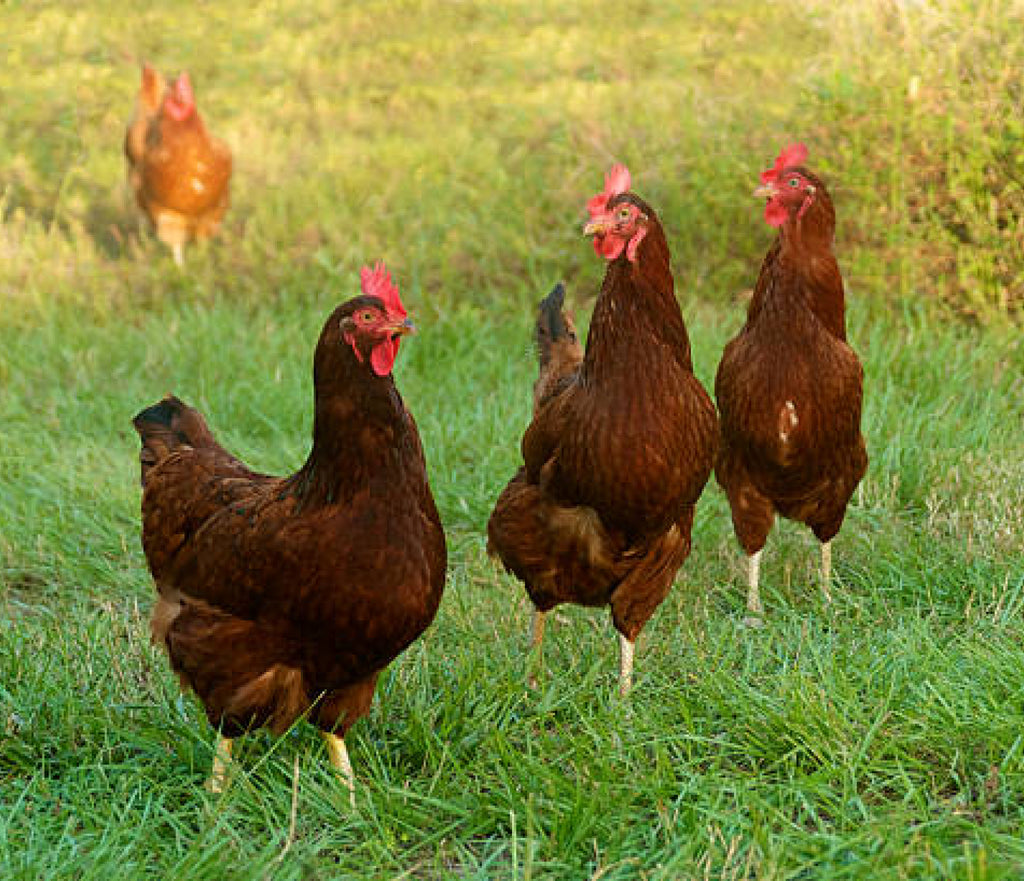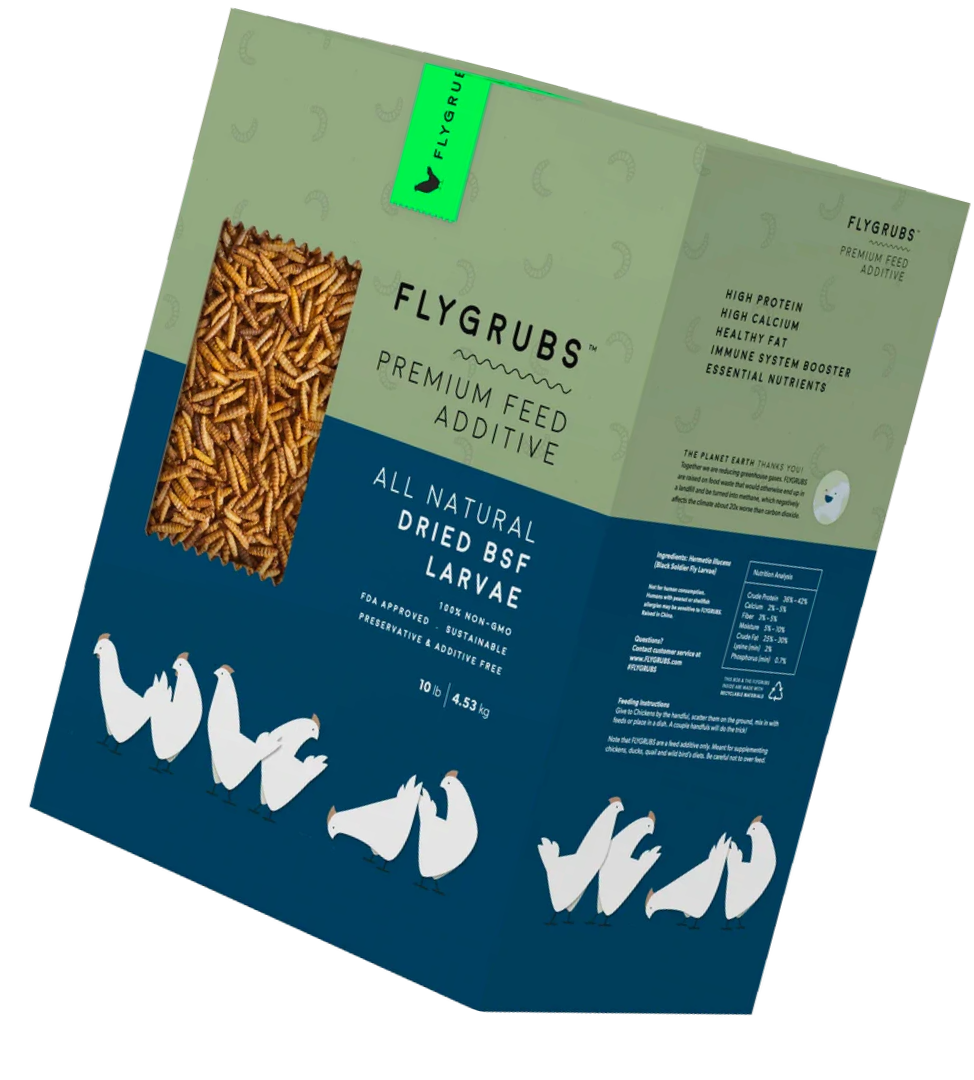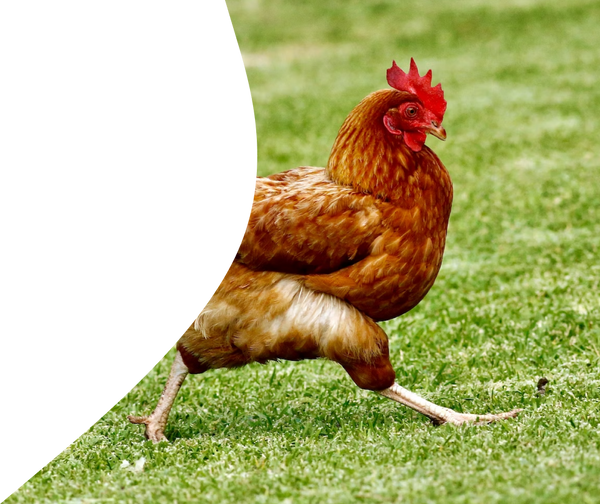
Rhode Island Red chickens, prized for their red feathers, hardiness, and egg-laying, are popular with both backyard and commercial farmers.
A US breed from the 1800s, combine Malay, Java, and Leghorn ancestry for a dual-purpose chicken: good for eggs and meat. Recognised in 1904, this breed aimed to be a reliable bird for both small farms and backyards.
- rich, dark red to mahogany plumage
- weigh around 6.5 pounds
- medium to large-sized birds
- beaks are reddish-brown
- yellow legs and feet
- robust build and attractive feathering

BREED & ORIGIN
Rhode Island Red
&
United States (Rhode Island and Massachusetts)

LIFE EXPECTANCY
6-8 years

HEIGHT & WEIGHT
Height: 9.8”-14.6” (25-37 cm)
&
Weight: Roosters: 8.5 lbs (3.9 kg) Hens: 6.5 lbs (2.9 kg)

Chicks (7 days old)

Growers (6 Weeks old)

Layers (26 Weeks old)
LOW
MEDIUM
HIGH
Temperament
Hardy, vigorous, somewhat aggressive roosters, friendly and docile hens
Activity Level
Active foragers, adapt well to both free-range and confinement
Climate Tolerance
Adaptable to wide range of climates, protection needed in extreme weather
Genetic Traits
Hardiness, good egg production
Egg Laying Capacity
High; 250-300 eggs per year
Broodiness
Moderate tendency, effective mothers

Feeding
Rhode Island Reds thrive on store-bought feed, grit, and oyster shells. Let them roam free to add bugs and plants to their diet.

Housing
Rhode Island Reds need a spacious coop (4 sq ft per bird) with good ventilation and a run (10 sq ft per bird) for exercise. Provide nesting boxes (1 for every 3-4 hens) for egg-laying.

Health
Rhode Island Reds are healthy birds, but watch for common chicken problems like mites and keep their coop clean.

Rhode Island Reds?
Breeding Practices
When breeding Rhode Island Reds, it is important to select healthy, vigorous birds with good conformation and egg-laying traits. The incubation period for their eggs is about 21 days.
Raising Chicks
Chicks should be kept in a brooder with a heat source, such as a heat lamp, until they are fully feathered at around 6 weeks. They need access to fresh water, chick starter feed, and a clean, dry environment. As they grow, gradually introduce them to the rest of the flock to ensure smooth integration.
Nutritional Needs
Chicken requires a balanced diet. Flygrubs complement their diet well, it contains 36–42% protein, 25–30% healthy fat, 2–5% calcium and phosphorus, fiber, lysine, and dietary fat. It also have an optimal calcium-to-phosphorus ratio.
Flygrubs offers a variety of insect-based feeds that can be a good source of protein for Rhode Island Reds. It can be given dried or rehydrated.

Rhode Island Reds are reliable egg layers that thrive in various settings, making them popular for both farms and backyards. They're even the official bird of Rhode Island, showcasing their importance to American agriculture and culture.
Category |
Details |
|---|---|
Breed |
Rhode Island Red |
Origin |
United States (Rhode Island and Massachusetts) |
Temperature |
Ideal temperature range: 55-75°F (13-24°C) |
Common Health Issues |
Prone to coccidiosis and Marek's disease, preventive measures recommended |
Commercial Use |
Significant in both egg and meat production for small farms and backyard setups |
Backyard Use |
Popular for high egg production and manageable size |
Breed Standards |
Admitted to American Poultry Association's Standard of Perfection in 1904 |
Exhibition |
Judged based on breed standards including feather color, comb shape, body condition |
Role in Culture |
Official state bird of Rhode Island, symbol of American farm chicken |
Population Status |
Common, though pure strains less frequent; not endangered |
Conservation Efforts |
The traditional non-industrial strains of the Rhode Island Red are listed as "watch" (medium conservation priority, between "recovering" and "threatened") by The Livestock Conservancy |
Breeding Practices |
Breeders focus on selecting birds with desirable dual-purpose characteristics, such as good egg production, meat quality, and hardy constitution. Feather color and comb type are also important selection criteria. Inbreeding is minimized to maintain genetic diversity. Pedigree records and performance data are used to make informed breeding decisions. |
Fertility Rates |
According to a study, Rhode Island Red (RIR) chickens have a fertility rate of 94.5%. The study also found that RIR chickens have a mean hatchability of 64% and that 76.8% of their fertile eggs produce healthy chicks |
Parasite Control |
Best practices for managing internal and external parasites |
Market Value |
Approximately $3.5-$5.5 per chick |
Cost of Raising |
Approximately $30-$40 per chicken per year, including feed, housing, and healthcare costs |
- High egg production (250-300 eggs per year)
- Hardy and adaptable to various climates
- Good foragers, reducing feed costs
- Dual-purpose: good for both eggs and meat
- Friendly and docile hens
- Roosters can be aggressive
- Prone to some health issues like coccidiosis and Marek's disease

Rhode Island Reds typically start laying eggs at around 18-24 weeks of age.